If your brake pedal feels soft, it usually means there’s air in the brake lines, low brake fluid, or a leak that’s reducing hydraulic pressure. This soft or spongy feel means your braking system isn’t working the way it should, and that puts your safety at risk. A soft brake pedal can cause delays in stopping, require more pressure to slow down, and may get worse if ignored.
This guide explains why your brake pedal feels soft, how to fix it, and when to call a mechanic. You’ll learn about the most common causes, step-by-step checks you can do yourself, and what to expect if repairs are needed.
Table of Contents
What Does a Soft Brake Pedal Feel Like?
A soft brake pedal doesn’t give you the firm resistance you’re used to. Instead, it feels squishy or sinks farther than normal when you press it. You might need to pump the brake several times to get your car to stop. In some cases, it feels like the brake pedal goes almost to the floor before anything happens.
Common symptoms include:
- Pedal feels mushy or squishy
- Pedal travels too far before braking starts
- You need to pump the pedal to build pressure
- Slower braking response than usual
- Reduced confidence when stopping
If you notice any of these signs, it’s important to diagnose and fix the issue right away.
Why Is a Soft Brake Pedal Dangerous?
Your car’s brakes are designed to stop your vehicle quickly and safely. A soft pedal reduces the braking pressure you can apply, which makes it harder to stop in time during emergencies. It can increase your stopping distance and may lead to full brake failure if left unresolved.
Driving with a soft brake pedal is unsafe because:
- Your braking distance increases
- Emergency stops become less effective
- You could lose braking power completely
- You risk putting yourself and others in danger
Even if the car seems drivable, do not take chances with your brakes. Address the issue as soon as possible.
Top Reasons Your Brake Pedal Feels Soft
Several factors can lead to a soft or spongy brake pedal. Here are the most common causes.
Air in the Brake Lines
Air in the brake lines is one of the most common causes of a soft brake pedal. Brake systems rely on fluid pressure to work. Air compresses under pressure, which interrupts the system and makes the pedal feel soft.
Air can enter the brake lines during a brake repair or fluid change, especially if the system wasn’t bled properly.
Solution: Bleed the brake lines to remove air and restore proper pressure.
Low Brake Fluid
Low brake fluid causes a drop in pressure in your braking system. This can make the pedal feel soft or spongy. Brake fluid can become low due to normal brake pad wear, but often it’s a sign of a leak.
Solution: Check the brake fluid reservoir and top it off with the correct type. If the fluid drops again, check for leaks and fix them immediately.
Brake Fluid Leak
Leaks in your brake lines or calipers let fluid escape, which reduces pressure and introduces air into the system. Leaks are a serious safety issue and must be addressed right away.
Signs of a leak include:
- Fluid under the car near the wheels
- A sudden drop in brake fluid level
- A dashboard brake warning light
Solution: Identify and repair the source of the leak, then refill and bleed the system.
Failing Master Cylinder
The master cylinder is responsible for building the pressure that activates your brakes. If its internal seals fail, the system can’t hold pressure. This often causes the brake pedal to sink slowly as you hold it.
Solution: Replace the master cylinder and bleed the brake system.
Rear Drum Brake Adjustment
If your car has rear drum brakes, they need regular adjustment. As the shoes wear down, they move farther from the drum, causing the pedal to travel more before they engage.
Solution: Adjust the rear brakes manually or have them serviced during regular maintenance.
ABS System Faults
Your car’s anti-lock braking system (ABS) includes valves and sensors that control brake pressure. If a component malfunctions, it can cause pressure problems and lead to a soft pedal.
Solution: Scan the ABS system for fault codes and repair or replace damaged components.
Brake Caliper Issues
A stuck or leaking caliper can lead to uneven braking or soft pedal feel. This is more likely to happen if a caliper piston is stuck open or a seal is damaged.
Solution: Inspect the calipers and replace or rebuild any faulty parts.
Quick Fixes You Can Try at Home
If your brake pedal feels soft, you may be able to fix the issue with a few simple steps. However, always be cautious. If you’re unsure or uncomfortable performing these steps, call a mechanic.
Check the Brake Fluid
Open the hood and check the brake fluid reservoir. The fluid should be between the minimum and maximum lines. If it’s low, top it off with the correct brake fluid type (usually DOT 3 or DOT 4, listed on the cap).
Inspect for Leaks
Look around each wheel, brake line, and the area near the master cylinder. If you see wet spots or puddles, you may have a leak. Don’t drive until it’s repaired.
Pump the Pedal
Press the brake pedal a few times. If it firms up after pumping, that’s a sign of air in the brake lines or an issue with rear brake adjustment.
Bleed the Brakes
Bleeding the brakes removes trapped air. You’ll need either a partner or a brake bleeder kit. Follow your vehicle’s brake bleeding sequence as outlined in the manual.
When to Stop Driving and Call a Mechanic
Driving with soft brakes is risky. If the pedal sinks to the floor or you have to pump it to stop, your braking system is not safe. You should pull over and avoid further driving.
Call a mechanic or tow service if you notice:
- No resistance in the brake pedal
- Brake pedal goes to the floor
- Fluid leaking from any wheel or brake line
- ABS or brake warning lights
- You feel unsafe driving
Delaying repairs could lead to total brake failure, which is extremely dangerous.
Preventing a Soft Brake Pedal
Routine maintenance is the best way to avoid brake problems. A few simple habits can help prevent a soft brake pedal from happening in the future.
Schedule regular brake inspections. Have a mechanic inspect your brake fluid, pads, lines, and calipers at least once a year or every 12,000 miles.
Replace brake fluid every two to three years. Brake fluid absorbs moisture over time, which can cause rust, leaks, or air buildup.
Address early warning signs. If your brakes feel different, make noise, or trigger a warning light, get them checked right away.
Avoid riding the brakes. Keep your foot off the brake pedal when it’s not needed, especially when driving downhill, to prevent overheating and fluid breakdown.
Final Thoughts
A soft brake pedal means your vehicle’s braking system isn’t building the pressure it needs to stop your car safely. Whether it’s air in the lines, low brake fluid, a leak, or a more serious part failure, the issue needs immediate attention.
Start by checking the fluid level and looking for leaks. If the problem is simple, you may be able to fix it by bleeding the brakes. But if your pedal still feels soft after that, it’s time to contact a professional.
Never drive with unreliable brakes. Your safety depends on stopping when it counts.
FAQs
What causes a soft brake pedal?
Most soft brake pedals are caused by air in the brake lines, low brake fluid, or a fluid leak. These reduce the pressure your brake system needs to work properly.
Is it safe to drive with a soft brake pedal?
No. Driving with a soft brake pedal is dangerous. It can increase stopping distance and lead to full brake failure.
How do I fix a soft brake pedal?
Start by checking and topping off the brake fluid. Then bleed the brakes to remove air from the lines. If the pedal still feels soft, inspect for leaks or part failures.
Why does the brake pedal sink to the floor?
This is often caused by a failed master cylinder or a severe fluid leak. The system can’t hold pressure, so the pedal sinks when pressed.
Does brake fluid wear out?
Yes. Brake fluid absorbs moisture over time, which reduces its effectiveness. It should be replaced every two to three years.
Can worn brake pads make the pedal feel soft?
They can contribute, especially if the pads are extremely thin. However, soft pedal feel is usually due to pressure issues, not just pad wear.
How much does it cost to fix a soft brake pedal?
It depends on the cause. Bleeding brakes or replacing fluid is inexpensive. Repairing a master cylinder, ABS unit, or leaking lines will cost more.

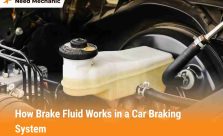
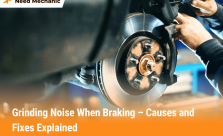
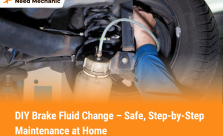
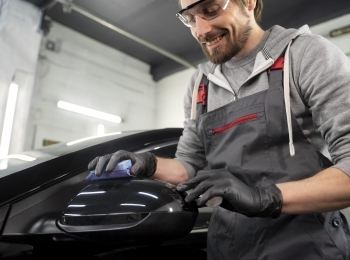

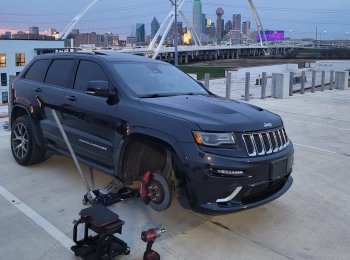





Leave a Reply